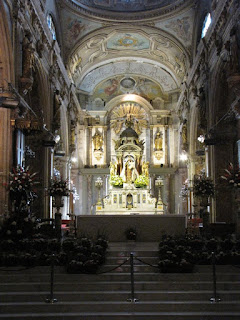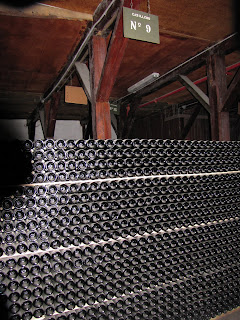
Santiago is a big city with tall skyscrapers, busy freeways, crowded barrios and five million inhabitants. But for all its isolation in a distant continent far away from the developed world, Santiago has long aspired to be in the first rank. Since its founding by Pedro De Valdivia in 1541, town planners laid out grand neighborhoods and broad boulevards. And, over the centuries, some places in the city have been created that deliberately evoke memories of the way life was in the familiar old world back in Europe.

Our visit with Martin and Joni Plaehn was coming to an end, so we decided to walk around some of these European style cobblestone streets near the old Iglesia de San Francisco or St. Francis Church built in 1554.

We were fortunate to visit on a Sunday morning when there were fewer cars and people so we could feel the true ambiance of the area without the press of the metropolis upon us.

Could this be Montmartre in Paris? No, the snow-covered peak in the distance tells otherwise, but the feeling is familiar just the same.

The area was designed by architects Cruz Montt and Larrain Bravo, both graduates of the Ecole des Beaux Artes.

Some doors and

grills in the

homes of the neighborhood.

This is the 18th century Cathedral Metropolitana at the Plaza de Armas. When the city was founded in 1541, there was a military armoury located in the plaza and the name stuck. All distances along the Pan American Highway in Chile are measured from "Kilometro Cero", a metal tablet here in the square.

This is the fifth cathedral to stand on the east facing site, all the earlier ones having been destroyed by fire or earthquake.














































